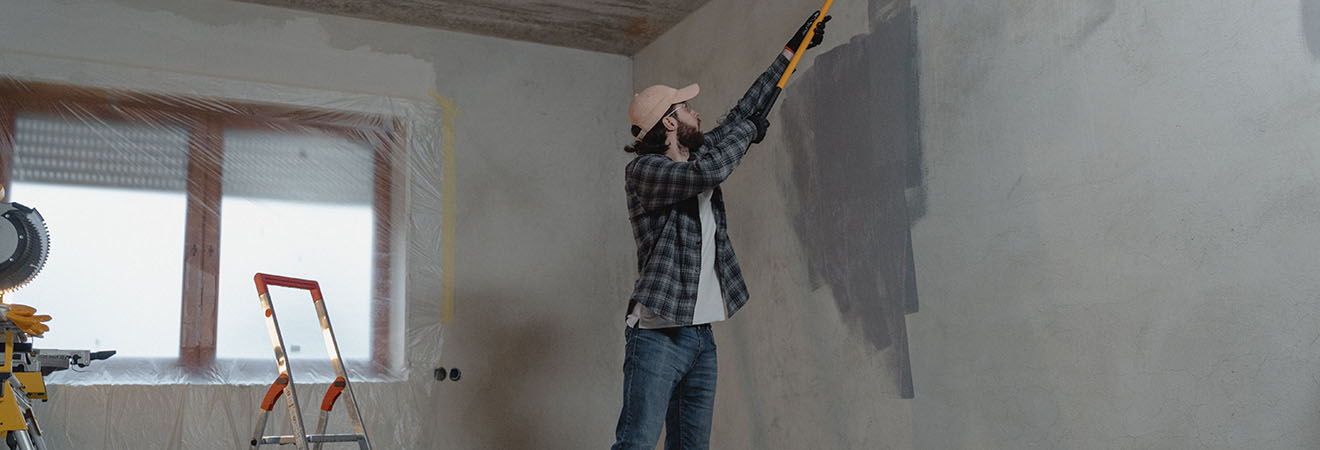The harmful effects of asbestos exposure have been known for decades, and it has long since fallen out of use in construction. Unfortunately, little consideration has been given to asbestos which remains in thousands of buildings around the country – most particularly in private homes and outbuildings.
Doing your own DIY has become more popular with the rise of online video tutorials, and the need to save money in today’s economy. If you are planning to renovate or remodel your home, here are some tips on how to identify and manage asbestos – and what you can do to protect yourself and remove it safely.
The risks of asbestos in homes
The use of asbestos was made illegal across most of the world in the late 20th century, apart from some very specific use cases. Until the 1970s, however, use of the substance was rampant. Starting early in the century, the seemingly miraculous properties of asbestos – it is both fire resistant, and insulates against heat and electricity – meant that it became a sort of panacea for construction. Asbestos was used in hundreds of applications, from the roof tiles to insulation to partition walls.
Evidence built up throughout the 20th century that asbestos was deadly when inhaled, leading to the development of unique diseases, including the aggressive cancer mesothelioma. What this led to however was not the end of asbestos use, but the gradual phasing out of certain types of asbestos. Some asbestos was more prone to releasing fibres, and the fibres were more dangerous when breathed in. But a reluctance to give up this useful material combined with the money invested in asbestos saw it used for decades to come.
What the evidence showed was that there is no safe level of asbestos exposure, regardless of which kind of asbestos it was. Despite the fact that the use of blue and brown asbestos was ended earlier, all kinds of asbestos are still prevalent in buildings across the country. While businesses and public sector organisations are required to keep tabs on their asbestos by law, there is no such requirement for individuals or landlords – making old houses a common site for asbestos exposure.
How to identify asbestos in homes
The wide range of uses for asbestos mean that it can be difficult to narrow down to a set of obvious use cases. This means that if your home predates the asbestos ban in 2000, it is reasonable to expect that it may contain asbestos in some form. There are also a limited number of uses of asbestos which may have occurred in the immediate years after the ban, where the use of some products was permitted even though they could no longer be manufactured.
However, there are some common areas where asbestos might be located, including:
- Artex wall and ceiling decorations (pre-2000 stock)
- Roof tiles
- Shed roofs
- Wall and attic insulation
- Boiler and tank insulation
- Pipe lagging
- Vinyl floor tiles
- Ceiling tiles
- Bath paneling
- Toilet seats and cisterns
- Partition walls
- Door and window panels
An Asbestos Awareness course will expand on these uses, and can provide you with a greater awareness of asbestos containing materials (ACMs), as well as the confidence to identify them. Taking an Asbestos Awareness course is highly recommended prior to any DIY work in an old home. If you suspect the presence of asbestos, however, it is highly recommended to employ professional help in order to conclusively locate and test it.
How to deal with asbestos in homes
While not illegal, the Health & Safety Executive strongly discourages homeowners from carrying out any work on ACMs, whether that is removal or repair. What is illegal is disposing of asbestos incorrectly. ACMs must be disposed of as hazardous materials, a process which generally involves consultation with your local council, or the employment of a specialist asbestos removal firm.
If you suspect your home may contain asbestos, the best course of action is to employ trained professionals who can positively identify these materials, or test them in the absence of obvious proof. They can also perform an air quality test to see if any asbestos fibres are present, and make a more informed decision as to whether the ACMs need to be removed, or whether they can be left in place and continue to be monitored.
It is important that you use licensed and registered professionals for any work involving asbestos. Failing to do so may expose you to elevated risks, as the work is likely to release asbestos fibres that could cause severe health issues. This is more likely than you would think, as there is some work with asbestos that does not require a license, such as short-term (less than two hour) work on asbestos insulating boards (AIBs). Additionally, not all building firms or labourers are themselves aware of the risks of asbestos, or the full range of ACMs.
—
While there are no concrete figures on the presence of asbestos in homes around the UK, it is an inevitable aspect of many older builds. If your home was constructed in the latter half of the 20th century, it’s likely that some aspect of it may have included asbestos, such was its ubiquity as a construction material.
By taking a short asbestos awareness course, you can gain some insight into both the dangers of asbestos and how to recognise it, whether that’s at home or at work. This should give you the knowledge and confidence to react appropriately if you do suspect the presence of asbestos, and employ specialist help to contain or remove it.


